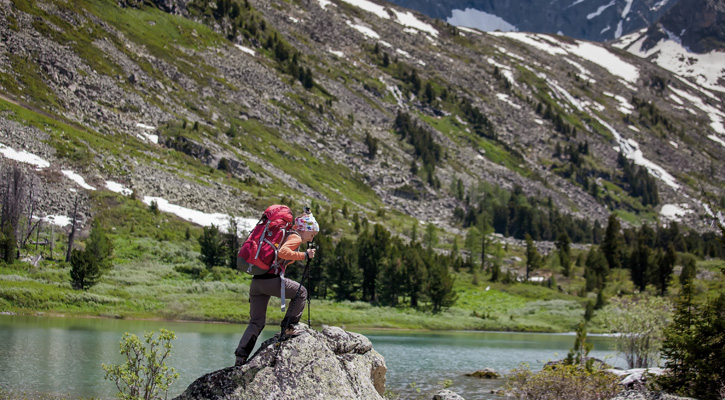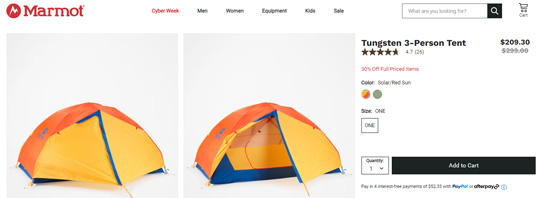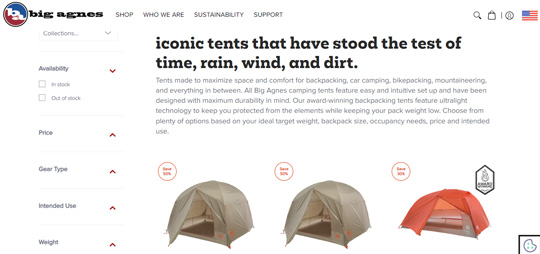
Camping is a great way to enjoy nature, but you might have noticed that tents can be quite pricey.
The cost of camping tents is influenced by their materials, durability, and features. When you invest in a good tent, you’re paying for quality that can withstand weather changes and last through many trips.
The materials used in tents are designed to be lightweight yet strong. The high-quality fabric needs to resist tears and weather conditions, which makes it more expensive.
The technology to ensure waterproofing and breathability also adds to the cost.
Camping tents often include advanced features like easy setup designs, strong poles, and extra ventilation. These features make your camping experience more comfortable and hassle-free.
Understanding these aspects can help you appreciate why these tents come with higher price tags, ensuring you make a wise purchase decision.
Why Are Camping Tents Expensive?
When deciding on a camping tent, prices can vary widely. This depends on several factors, including the quality of materials, resistance to weather, and the brand’s reputation and warranty.
Understanding these elements will help you make an informed choice.
The video will be loaded from YouTube.com, a third party. If you play it, you accept their terms of service, and their use of cookies.
Material Quality and Durability
The materials used in tents significantly influence their cost. High-quality fabrics such as ripstop nylon or polyester are both lightweight and durable, which is crucial for camping.
These fabrics are designed to withstand tears and wear over time, adding to their price.
Cheaper tents might use lower-grade materials that may not last as long. The strength of zippers, poles made from aluminum or carbon fiber, and reinforcements in stress areas also contribute to costs, enhancing durability and performance.
Investing in better materials usually translates to a longer-lasting tent.
Weather Resistance Capabilities
Tents designed for various weather conditions tend to cost more. Features like waterproof coatings or sealed seams keep you dry in the rain. Added ventilation helps reduce condensation inside.
Four-season tents often have stronger poles and thicker fabric to withstand snow and high winds, making them pricier than summer tents.
You pay for protection and assurance against unpredictable weather. Always consider the kind of weather you’ll face when camping, and choose a tent accordingly.
Brand Recognition and Warranty
A tent from a well-known brand often comes with a higher price tag. Recognized brands invest in research and development to create better products. They also have strict quality control processes, ensuring each tent meets certain standards.
Moreover, well-established brands often provide warranties, giving you peace of mind if something goes wrong.
The trust in a brand and its commitment to customer satisfaction often justifies the extra cost.
Design and Features
Camping tents often involve advanced design and thoughtful features. These elements contribute significantly to their cost, as they focus on durability, comfort, and functionality that meet the needs of outdoor enthusiasts.

Innovative Engineering
Tent designs today use high-tech materials and construction techniques. This includes lightweight, strong fabrics like ripstop nylon and polyester, which resist tearing and withstand harsh weather. Poles made from aluminum or carbon fiber enhance stability while keeping weight low.
Tents often have aerodynamic shapes to reduce wind resistance. Manufacturers test them rigorously in different environments to ensure strength.
These engineering advancements require research and development, influencing the tent’s price.
Comfort and Space Considerations
Modern tents prioritize personal space and comfort. Designers focus on internal height and floor area to accommodate campers and gear. Vestibules and multiple compartments offer organized storage options that keep your living area clutter-free.
Ventilation is key to comfort. Mesh windows and multiple doors improve airflow, helping reduce condensation. Larger tents often have room dividers, giving families or groups privacy.
The focus on these details increases production costs, reflected in the tent’s pricing.
Added Amenities
Today’s tents include extra features aimed at enhancing the camping experience. Built-in LED lights, electrical ports, and storage pockets add convenience.
They’re designed with your needs in mind, making camping more enjoyable.
Waterproof coatings and UV protection are commonly integrated into tent fabrics, shielding you from rain and sun damage. Some tents offer easy setup features, like color-coded poles and clip systems, to save time and effort.
These amenities contribute to the overall expense but provide added value and functionality.
Manufacturing and Production Costs
Camping tents are costly because of the care and skill involved in their creation. From the training needed for workers to the scale of production and the choice of eco-friendly methods, every step adds value and cost.

Skilled Labor and Expertise
Producing a high-quality tent requires skilled workers. These experts know how to select durable materials and use precision in cutting and sewing.
Their expertise ensures that the tent can withstand harsh conditions. Training and paying these workers fairly adds to the overall cost. When you buy a tent, you are also paying for the craftsmanship and reliability that skilled labor provides.
Economies of Scale and Manufacturing Volume
The production volume impacts the price too. Tents are not always mass-produced like other consumer products.
Smaller production runs mean that manufacturing costs are higher per unit. Fewer tents produced can lead to increased material and labor costs. Large-scale production might lower costs, but not every company has a demand large enough to allow this.
Environmental and Ethical Manufacturing Practices
Environmental and ethical considerations also affect tent prices. Many manufacturers aim to reduce their environmental footprint.
They might use recycled materials or ensure fair labor practices. These choices often cost more than conventional methods. Choosing eco-friendly dyes, materials, and packaging all contribute to a higher price. When you buy such a tent, you support sustainable practices.
Market Demand and Seasonal Influence
Camping tents are influenced by market demand. When more people want to camp, the demand for tents goes up.
More demand can lead to higher prices because manufacturers might not keep up with all the orders.
Seasonal changes also play a big role in tent prices. In the spring and summer, when camping is more popular, prices may rise. Tents can become more expensive as many people buy them for their outdoor adventures.
In the fall and winter, you might find lower prices or discounts. Fewer people camp during these seasons, so stores may reduce prices to clear inventory. This is a good time to look for deals if you’re planning for next year.
Special events such as festivals or outdoor shows can also drive up demand. Organizers may require tents or rentals, which impacts prices even for individual buyers.
A comparison of strategies for buying tents could look like this:
| Season | Likely Price Trend | Buying Strategy |
|---|---|---|
| Spring | Prices increase | Buy early in advance |
| Summer | Prices peak | Look for off-peak deals |
| Fall | Prices decrease | Take advantage of sales |
| Winter | Low prices | Buy for next season |
Knowing when to buy a camping tent can help you save money and get the best deal. With this knowledge, you can plan your purchases smartly based on market and season changes.
Cost of Research and Development
When you think about camping tents, research and development (R&D) might not be the first thing on your mind. Yet, R&D plays a big role in their cost.
Companies invest in R&D to make tents better. Engineers and designers work to create tents that are more durable, easier to set up, and capable of withstanding harsh weather.
This requires time, which adds to the price. Testing is another R&D expense. Tents are tested in various environments to ensure quality.
This process ensures you get a reliable product, but it increases overall cost. Materials for new tents also come from R&D. Experiments with light but strong materials are common.
Using advanced textiles for strength and weather resistance involves trial and error, increasing expenses.
Key R&D Activities:
- Design and Innovation: Creating new tent models and features.
- Material Testing: Evaluating new and existing materials for efficiency.
- Weather Testing: Ensuring tents can handle different climates.
In short, R&D is a large part of the price because it pushes the boundaries of what tents can do. So, when you buy a tent, R&D is a big part of what you’re paying for.
